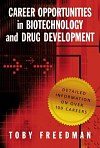 Earlier this week, I went to see “one” of my childhood musical heroes, progressively rocking Canadian three piece Rush. The band was on top form as ever and the crowd jostled to the music almost in synchrony like so many atoms in a Bose-Einstein condensate (BEC) as the band raised the energy levels. They played most of their latest album, covering themes of humanism and faith without religion as well as resurrecting some stonkers from their vast back catalogue including the epic Natural Science from 1980 album Permanent Waves.
Earlier this week, I went to see “one” of my childhood musical heroes, progressively rocking Canadian three piece Rush. The band was on top form as ever and the crowd jostled to the music almost in synchrony like so many atoms in a Bose-Einstein condensate (BEC) as the band raised the energy levels. They played most of their latest album, covering themes of humanism and faith without religion as well as resurrecting some stonkers from their vast back catalogue including the epic Natural Science from 1980 album Permanent Waves.
It was just before that album came out, 78-79, that I first got into Rush, perhaps it’s no coincidence, that the technicality of their music appealed to my early noodlings on the guitar while the content of their lyrics, which aren’t so much sword and sorcery as science and nature, appealed to my inner geek. Not the more usual sex, and drugs, and rock & roll for the maturing Rush of late 1970s, more the cynical take on our place in the world, with tracks such as the aforementioned Natural Science discussing the balance between the natural and the synthetic world and how integrity of purpose could allow us to reach an equilibrium between control and understanding through science.
Science and Rush were always a likely match. They did a song called Chemistry, after all, and a two-part conceptual epic spread over two albums about the black hole Cygnus X-1, and guitarist Alex Lifeson is on record as being quite a science fan. I’m quite proud of the sheer coincidence that not long after I published an article about earthshine, drummer and lyricist Neil Peart saw fit to write about that very subject as an allegory of the public perception of our inner selves. But, it’s no coincidence that Rush generally top the ubergeek’s playlist.
In fact, just for fun here’s a few other scientifically minded fans of the band: Paul May, chemist, Bristol Uni, creator of MotM, Steve Sain, statistician, unfortunately also confesses to having seen Billy Joel in concert, Mark Lewney, physicist, and rock doctor (think Einstein meets Hendrix), Nicole Biamonte, Iowa University music theorist, David Muir, educational computing guy, Arvind Gopu, lead systems analyst for the Open Science Grid Operations group at Indiana University, Anthony Francis, artificial intelligence researcher and science fiction author, Jon Price, geotechnogeek at Rensselaer Polytechnic Institute. Let me know if you want to add your name and link to the list.
Now, tell me what is the biophysics behind post-gig ringing in the ears?




 According to Toby Freedman, a university life “generally does not prepare individuals for careers in industry”. On the other hand, news this week that a freshman physics class just launched their own company, suggests he might on occasion be wrong. Nevertheless, an academic training is not entirely compatible with a move to the harsh realities of the commercial world and Freedman, who does hold a PhD, which she obtained from the University of North Carolina at Chapel Hill, and has written a book to help life scientists make the transition.
According to Toby Freedman, a university life “generally does not prepare individuals for careers in industry”. On the other hand, news this week that a freshman physics class just launched their own company, suggests he might on occasion be wrong. Nevertheless, an academic training is not entirely compatible with a move to the harsh realities of the commercial world and Freedman, who does hold a PhD, which she obtained from the University of North Carolina at Chapel Hill, and has written a book to help life scientists make the transition.